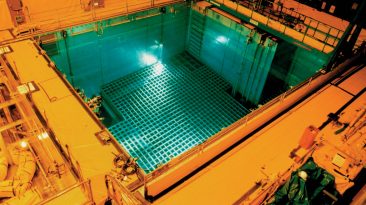Imagine traveling at the speed of an airplane, but on ground level, and in a giant tube. That’s the idea behind the Hyperloop, a network of incredibly fast moving pods that can carry passengers to destinations all over the world, reducing travel times from hours to minutes.
But how would that work? Would it be safe? And what would it be like to ride in one of them?
A hyperloop consists of pods that travel through pressurized tubes using electromagnetic propulsion.This may sound like the stuff of science fiction, but several companies are surprisingly close to making it a safe, viable reality.
Once completed, this giant transportation system would connect all major cities around the globe. How would that change the way we live our lives?
If all goes according to plan, a hyperloop system would be cheaper, faster, and more environmentally friendly than planes, trains, and automobiles. The first ones would be built on a relatively small scale, covering shorter journeys like Los Angeles to San Fransisco.
Traveling at over 1,200 km/h, these speedy pods would take the pressure off gridlocked roads, making travel between cities much easier. Populations would have the ability to spread out further from city centers, since faster travel times would mean people aren’t forced to live where their the jobs are located.
We’d also have a lot more time to be productive, because we wouldn’t waste as much of our days getting to where we need to go. But the real exciting prospects of the hyperloop come into play when you look at it on a global scale.
First off, international travel would become a whole lot more accessible; Elon Musk, one of the founders of the project, says that tickets would be kept affordable ($20 for L.A. to San Fransisco) in order to open the service up to everyone.
On top of that, international deliveries would be completely revolutionized. With the Hyperloop, we could autonomously ship packages across the world at the cost of trucking, and the speed of flight.
But before we get too far ahead of ourselves with all the possibilities, what would it be like to ride the thing?
Well, for one thing, the pods would be pretty small; they’d have to be narrow to travel at such high speeds, so things might get a little cramped.
And you wouldn’t have any windows; instead, there would be augmented reality screens that can simulate scenery, or provide entertainment. But the seats would be comfortable, and that’s a big deal considering how intense the ride gets.
The designers behind the hyperloop say that riders would only experience unease during the acceleration and deceleration of the trip, a span of only about 2 minutes. But what about when it turns? Have you ever made a sharp turn in your car at 50 km/h? Well, imagine what that would be like at 1,200 km/h.
One way to smooth it out would be to make huge curves in the track to make long gradual turns, but that would make for a much larger impact on the areas the tunnels run through. And what if it needed to make an emergency stop? A sudden halt at these speeds would be 10 times worse than a car crash at 110 km/h!
These concerning questions, coupled with the obvious issues that would come with building giant tunnels that span across oceans and numerous governments, are signs that the Hyperloop may just be a fantasy for now.
Subscribe to What-If on Youtube or follow the show on Facebook Watch.
Sources
- “Hyperloop Transportation Technologies | Hyperlooptt”. 2018. Hyperloop Transportation Technologies | HTT. Accessed November 24 2018.
- “World Map Shows What A Hyperloop Future May Look Like”. Mike, Brown 2017. Inverse. Accessed November 24 2018.
- “This Is What It Might Be Like To Travel In A Hyperloop Pod”. 2018. World Economic Forum. Accessed November 24 2018.
- “Can Our Bodies Handle The Hyperloop?”. Akpan, Nsikan, 2016. PBS Newshour. Accessed November 24 2018.
- “What is Hyperloop? Everything you need to know about the race for super – fast travel?”. Ranger, Steve, 2018. zdnet.com. Accessed November 24 2018.
- “What A Global Economy Powered By Hyperloop Would Look Like”. Diaz, Jesus, 2018. Fast Company. Accessed November 24 2018.
- “What Is A Hyperloop And How Will It Change The World? – ADAPT Proptech Ventures”. 2018. ADAPT Proptech Ventures. Accessed November 24 2018.
- “The WIRED Guide To Hyperloop”. Davies, Alex, 2018. WIRED. Accessed November 24 2018.
- “5 Ways The Hyperloop Will Change How You Live”. Thompson, Chadie, 2016. Business Insider. Accessed November 24 2018.



























